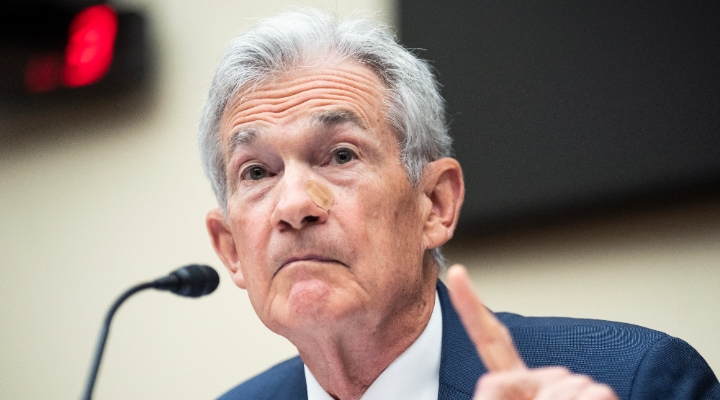
The Federal Reserve kept the federal funds rate unchanged at its latest meeting. Meanwhile, Fed watchers looked to Chair Jerome Powell’s official statement and remarks for insights as to when the central bank will begin cutting rates. After Wednesday’s announcement and press conference, we think cuts will begin in May rather than March.
The federal-funds rate currently stands at a target range of 5.25%-5.50%, following 500 basis points in hikes implemented from March 2022 to July 2023. This places rates well into “restrictive territory” as assessed by the Fed, meaning they are above normal levels, designed to cool economic activity and reduce inflation. Once inflation is back to the Fed’s 2% target, the interest rate should return closer to “neutral” longer-run levels, which members of the Federal Open Market Committee currently assess at around 2.5%.
Treasury Yield and Federal-Funds Rate
Data as of Jan 30, 2024. Source: Federal Reserve Economic Database
Core inflation has fallen year on year from a peak of 5.6% in February 2022 to 2.9% in December 2023 (using the personal consumption expenditures price index). In the last six months, core PCE inflation has averaged just 1.9% annualised.
When Will the Fed Start Cutting Rates?
Powell noted that rate cuts should begin once the Fed gains “greater confidence that inflation is moving sustainably toward 2%.” But despite the six-month inflation figure coming just under that figure, Powell stated that “ongoing progress to 2% inflation isn’t assured” as of today.
Powell cited the year-over-year (or 12-month) core inflation figure still being solidly above 2%, which would suggest that year-over-year inflation is the Fed’s main criterion for rate cuts. Powell has noted that the Fed will look to cut slightly before the 2% barrier is breached, although what margin of proximity the Fed is looking for (2.50%? 2.25%?) isn’t exactly clear.
We project year-on-year core PCE inflation to hit 2.5% in February. Such data will be available to the Fed at its March meeting. Based on this, we still think there’s a solid possibility of a March rate cut. However, Powell stated plainly today that a March cut is not currently the committee’s base case. This is the first time clear guidance has been given for March, so we now think it’s more likely than not that the Fed will refrain from cutting then. The bond markets are on the same page, with data from the CME FedWatch Tool now suggesting odds are against a March rate cut.
Still, the Fed is laying the groundwork for rate cuts. Language in the official meeting statement shifted from being hawkish to more symmetric concerning such changes. The line “in determining the extent of any additional policy firming...” in the December meeting became “in considering any adjustments to the target range for the federal funds rate...” yesterday.
Expectations for March Fed Meeting
Probability the Federal Reserve will leave the federal-funds rate unchanged or cut rates at its March meeting
Data as of Jan 31, 2024. Source: CME FedWatch Tool
We Forecast That Rate Cuts Will Start in May
By March, core PCE inflation should hit 2.3% year on year. That data will be available by the Fed’s May meeting. We think this should leave little doubt about the appropriateness of rate cuts, and thus we currently think a cut in May looks extremely likely. It is hard to fathom how the Fed could wait much longer than May if it is to begin cutting before hitting the 2% barrier, as it has guided.
We previously had a “skip” penciled in for May. Thus, our year-end 2024 forecast of a federal funds rate target range of 3.75%-4.00% is unchanged. The bond market agrees with this call.
Federal-Funds Rate Target Expectations
The highest probability outcome for each Federal Reserve meeting in 2024 as of January, compared with December predictions
Data as of Jan 31, 2024 Source: CME FedWatch Tool Upper bound of fed-funds rate target shown





























